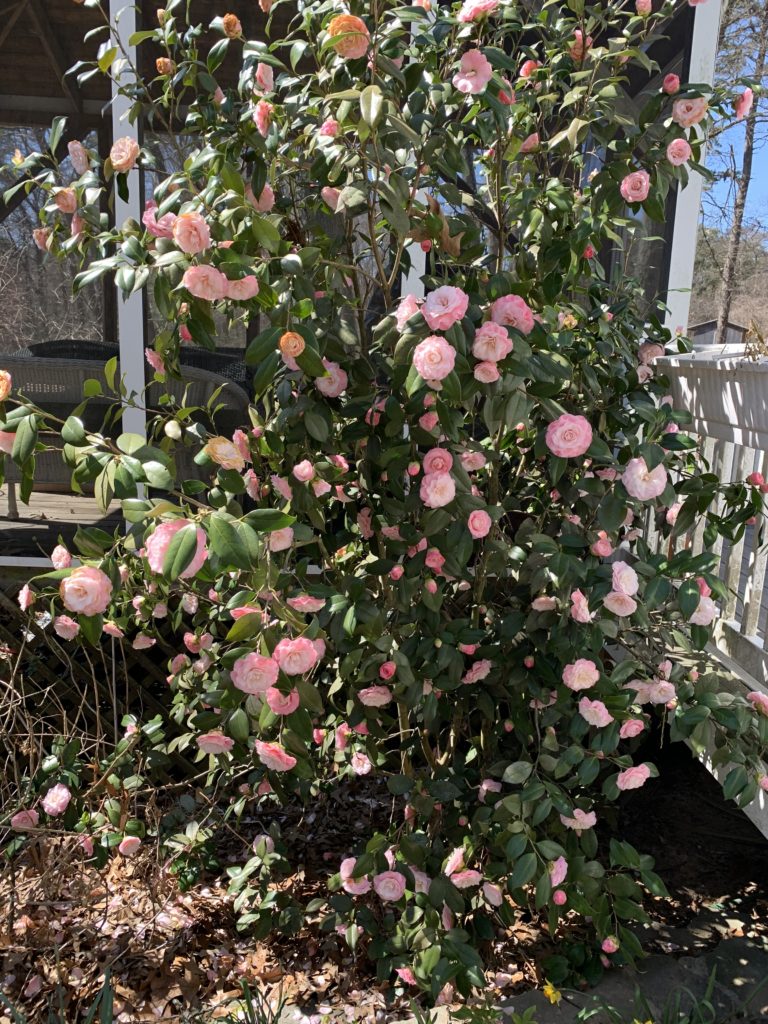Gardening for Health

The Year-Round Beauty of Camellias
By Maria Price
This has been a great year for camellias. There are few ornamentals that have the potential for so much aesthetic pleasure throughout the calendar year as camellias. The beauty and elegance of its many flower forms and the dark lustrous evergreen foliage is matched by few other shrubs. They bloom during the bleak days of autumn, winter and early spring, when many other plants are dormant.
Depending on the varieties, you can have blooms from late September to early May. This wasn’t always so. Only after the 1980s when the People’s Republic of China was opened to plant exports was there a flood of new species released to the Western world.
Breeding and hybridizing took place at the USDA’s U.S. Plant Introduction Station in Glenn Dale, Md., by Dr. William Ackerman. Prior to this time, camellias thrived in the South in the “Camellia Belt” (the area along the East Coast from central Virginia south to Florida and west into California).
The northern gardener should be more careful in choosing varieties that are hardy to zones six and seven. Even though we have many new and hardier varieties than in the past, freezing temperatures can turn half-opened blooms brown and the whole display can be lost. Camellias planted at the U.S. National Arboretum experienced extremely cold winters in the 1970s and early 1980s and extremely old plants were killed, adding to the belief that camellias were hard to grow. Today there are many new cultivars hardy to our area.
The new Camellia oleifera hybrids have their parentage in a selection process that extended for nearly 5,000 years in China, for their adaptation to adverse climatic conditions.
Camellias are grown for their beautiful flowers and as an evergreen landscape plant. In Asia, camellias are grown for their utilitarian value. Camellia sinensis has been grown in China as a beverage crop (tea) since around 2700 B.C. C. oleifera, grown as a source of seed oil used in cooking, hairdressing and cosmetics, has been cultivated for at least as long.
Camellia japonica cultivars bloom in the spring and C. sasanqua cultivars bloom in the late fall. Here in Maryland, spring planting is preferred. The best location is a north or northwestern exposure which protection from the prevailing winds. Camellias prefer a well-drained, slightly acid soil (pH 5.5-7). A slow-release fertilizer such as Osmocote (6-18-16) applied in March or early April is sufficient. I recommend the April series of hardy cultivars for the mid-Atlantic.
